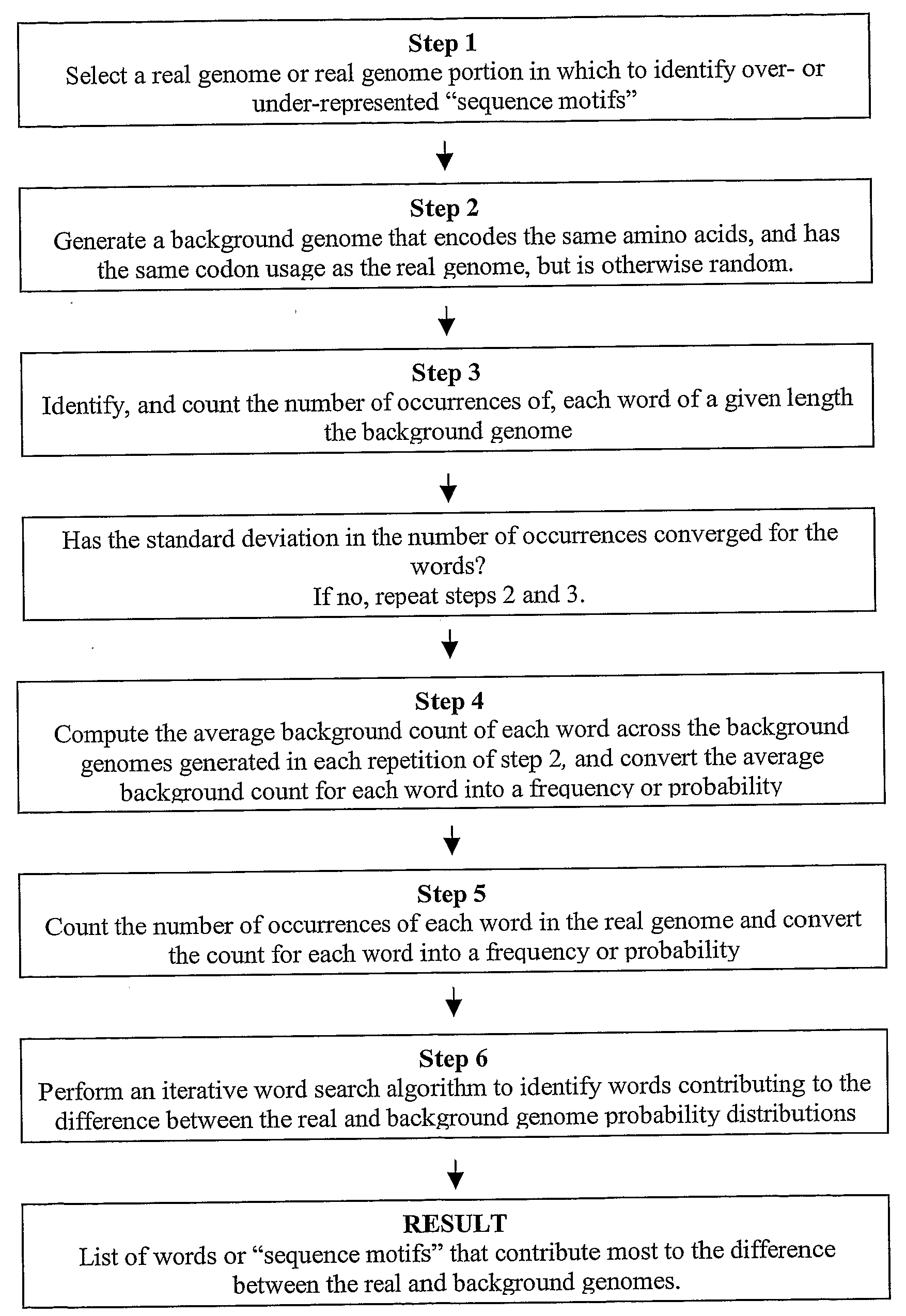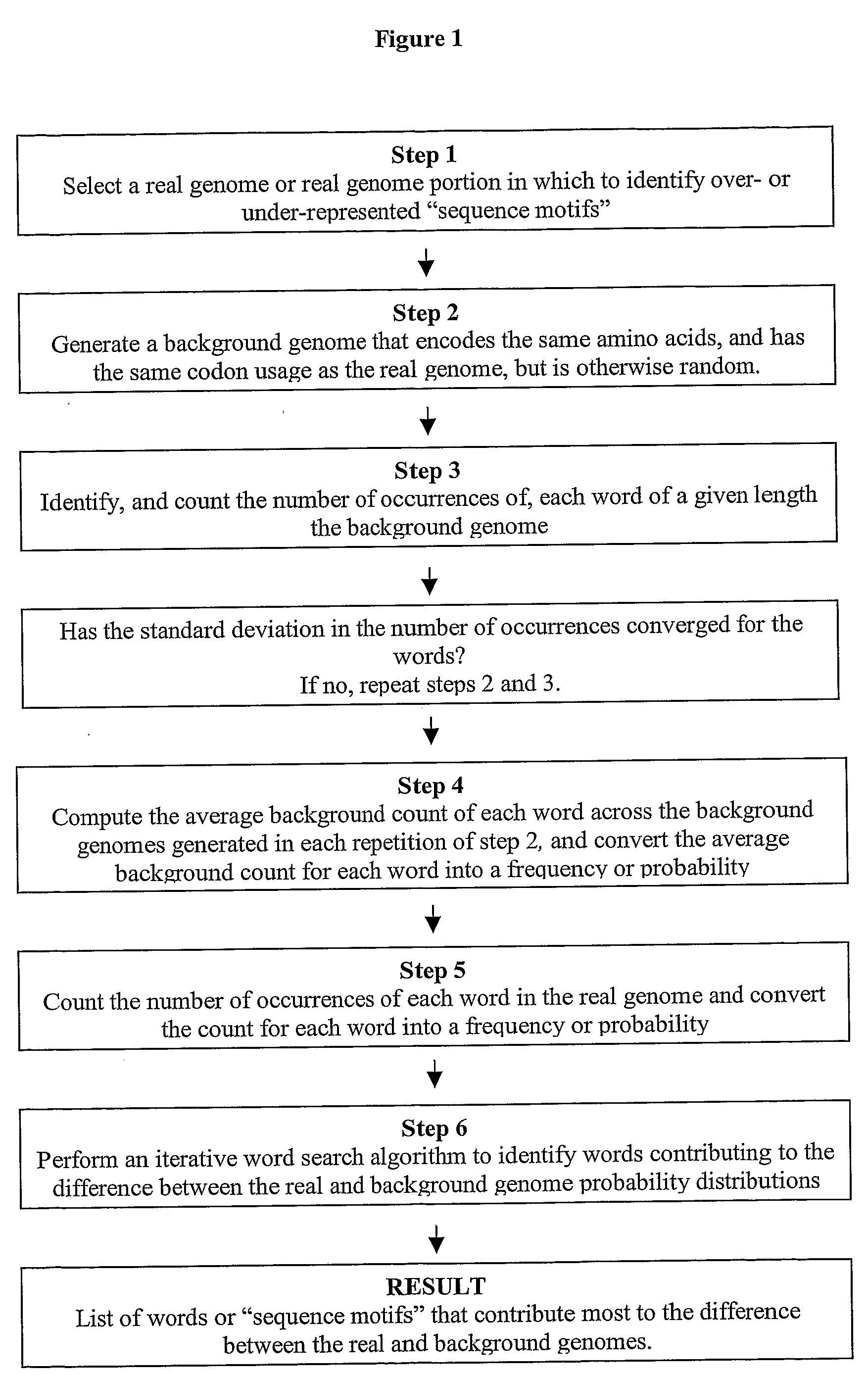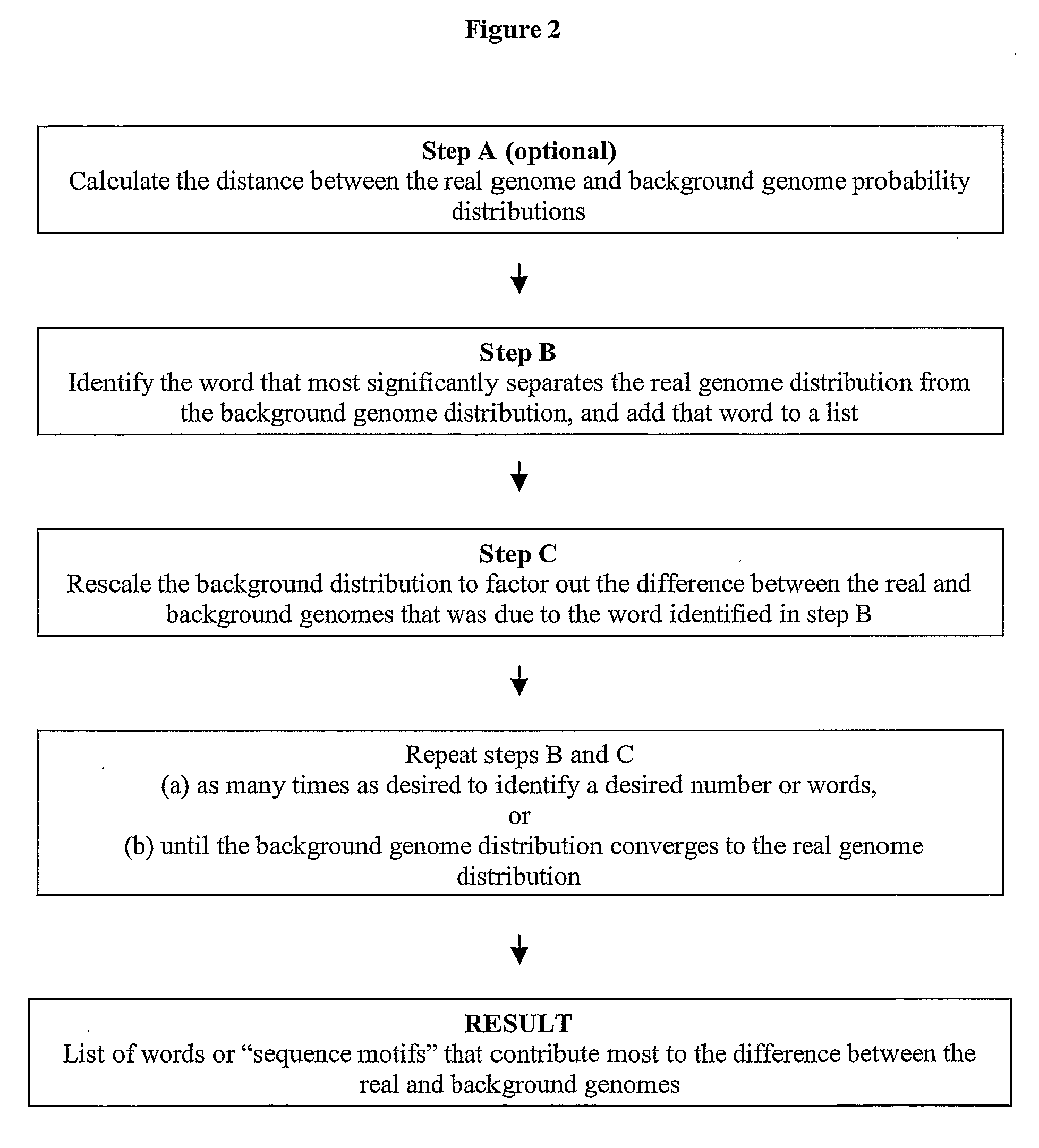Methods for identifying sequence motifs, and applications thereof
a sequence motifs and sequence technology, applied in the field of methods for identifying sequence motifs, to achieve the effect of optimizing the production of proteins, and reducing the number of sequence motifs
- Summary
- Abstract
- Description
- Claims
- Application Information
AI Technical Summary
Benefits of technology
Problems solved by technology
Method used
Image
Examples
example 1
Algorithms for Identifying Sequence Motifs
[0096]Genome analysis has uncovered many sequence differences among organisms. Both mononucleotide and dinucleotide content, as well as codon usage, vary widely among genomes. The size of even small bacterial genomes is statistically sufficient to determine a substantially richer set of sequence-based features describing each organism. However, many of these features have remained elusive, in the coding regions in particular, due to complicated constraints. Each gene encodes a particular protein, which constrains its possible nucleotide sequence. Because the genetic code is degenerate, this constraint still allows for an enormous number of possible DNA sequences for each gene. Also, the overall codon usage in each gene is known to have strong biological consequences, possibly determined by isoaccepting tRNA abundances. In order to isolate new features within the coding regions, these constraints must be factored out.
[0097]To solve these prob...
example 2
Proof that DKL Decreases Monotonically with Rescaling
[0118]The following is a proof that DKL decreases monotonically when background genomes are rescaled as described in step 6B of Example 1. Given two probability distributions {pj} and {qj}, with jεS and S being the set of possible outcomes, the Kullback-Leibler distance is given by equation (10) below.
DKL=∑jpjlogpjqj(10)
DKL is non-negative and zero only if the distributions are identical.
Consider a disjoint partition of S, into r sets, S1 . . . Sr, as described by (11)
Sk⋂Sl=Øifk≠land⋃iSi=S(11)
Next, define the coarse-grain probabilities,
Pi=∑j∈sipjandQi=∑j∈siqj(12)
Assume that Qi is >0 for all i. Note that both Pi and Qi are themselves probability distributions.
Define the rescaled distribution,
qj=qjPiQiforJ∈Si(13)
The new Kullback-Leibler distance is given by equation (14) below.
DKL′=∑jpjlogpjqj=∑i∑j∈sipjlogpjqjPiQi=DKL-∑iPilogPiQi≤DKL(14)
with equality only if Pi equals Qi for all i.
example 3
Algorithms for Scoring Sequence Motifs
[0119]To score a coding sequence, S, of length s, with respect to a genome G of length g, a word list for G was first generated as described in Example 1, with the following modification: words were added to the list only if they would be significant for a sequence of length s. This significance was determined by resealing the counts and the standard deviations for each word to the scale s. The counts of each word in the background genome and the real genome were multiplied by s / g, which gives the expected counts, Nb and Nr, for the sequence S. The standard deviation was rescaled by √s / g, giving Δs. If the word satisfied the equation |Nr−Nb|>3×Δs, then it was included on the list; otherwise, it was skipped. Because s is much less than g, this standard was substantially more strict than the multiple-hypothesis corrected cut-off described in Example 1. The rest of the iterative procedure, including resealing the background distribution, was the sa...
PUM
| Property | Measurement | Unit |
|---|---|---|
| frequency | aaaaa | aaaaa |
| length | aaaaa | aaaaa |
| Kullback-Leibler distance | aaaaa | aaaaa |
Abstract
Description
Claims
Application Information
 Login to View More
Login to View More - R&D
- Intellectual Property
- Life Sciences
- Materials
- Tech Scout
- Unparalleled Data Quality
- Higher Quality Content
- 60% Fewer Hallucinations
Browse by: Latest US Patents, China's latest patents, Technical Efficacy Thesaurus, Application Domain, Technology Topic, Popular Technical Reports.
© 2025 PatSnap. All rights reserved.Legal|Privacy policy|Modern Slavery Act Transparency Statement|Sitemap|About US| Contact US: help@patsnap.com



